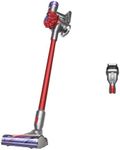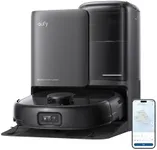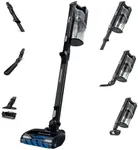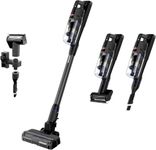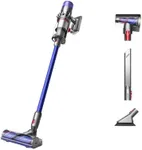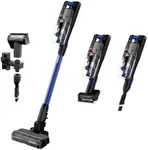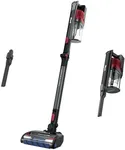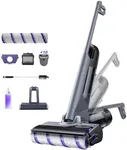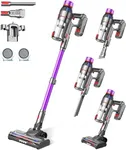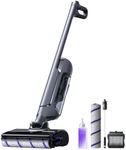Buying Guide for the Best Cordless Vacuums
Choosing a cordless vacuum can make cleaning your home much more convenient, as you won’t be tied to a power outlet or have to deal with tangled cords. The right cordless vacuum for you depends on your living space, cleaning habits, and the types of surfaces you need to clean. To make a smart choice, it’s important to understand the main features and specifications that affect performance and usability. By focusing on these key aspects, you can find a vacuum that fits your lifestyle and cleaning needs.Battery LifeBattery life refers to how long the vacuum can run on a single charge. This is important because it determines how much cleaning you can do before needing to recharge. Cordless vacuums typically offer anywhere from 15 to 60 minutes of runtime. Shorter battery life (15-25 minutes) is usually enough for quick cleanups or small apartments, while longer battery life (30-60 minutes) is better for larger homes or more thorough cleaning sessions. Think about the size of your space and how long you usually spend cleaning to decide what battery life will suit you best.
Suction PowerSuction power measures how effectively the vacuum can pick up dirt and debris. This is crucial for getting a deep clean, especially on carpets or with pet hair. Suction power is often described in air watts or simply as 'high' or 'low' by manufacturers. Lower suction is fine for hard floors and light messes, while higher suction is better for thick carpets or heavy-duty cleaning. If you have pets, kids, or lots of carpet, prioritize a model with stronger suction.
Weight and ManeuverabilityThe weight of a cordless vacuum affects how easy it is to carry and use, especially if you have stairs or need to clean above-floor areas like curtains. Lightweight models (under 5 pounds) are easier to handle and ideal for quick cleanups or people who may have trouble lifting heavier items. Heavier models (over 7 pounds) might offer more power or larger dust bins but can be tiring to use for long periods. Consider your physical comfort and the layout of your home when choosing the right weight.
Dust Bin CapacityDust bin capacity tells you how much dirt the vacuum can hold before it needs to be emptied. Smaller bins (under 0.5 liters) fill up quickly and are best for small spaces or frequent emptying, while larger bins (over 0.7 liters) are better for bigger homes or less frequent maintenance. If you dislike emptying the bin often or have a lot of mess to clean, look for a model with a larger capacity.
Filtration SystemThe filtration system determines how well the vacuum traps dust, allergens, and fine particles. Basic filters are fine for general cleaning, but if you have allergies or pets, look for vacuums with HEPA filters, which capture more tiny particles and help keep the air cleaner. If air quality is a concern for you or your family, prioritize a model with advanced filtration.
Attachments and AccessoriesAttachments like crevice tools, motorized brushes, and upholstery tools expand what your vacuum can do. More attachments are useful if you want to clean furniture, car interiors, or tight spaces. If you only need to clean floors, fewer attachments may be fine. Think about the types of surfaces and areas you’ll be cleaning most often to decide which accessories are important for you.
Charging TimeCharging time is how long it takes to fully recharge the vacuum’s battery. Faster charging (under 3 hours) means less waiting between uses, while slower charging (over 4 hours) might be inconvenient if you need to clean often. If you tend to do quick, frequent cleanups, a shorter charging time can be a big advantage.

